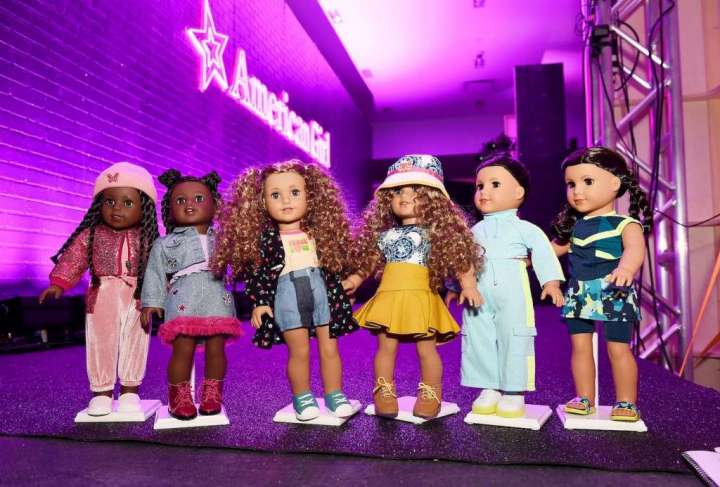I haven’t thought about dolls this much since I left grade school.
We need an American Girl doll who hasn’t given up

And not the American Girl dolls as I knew them in the ’90s and early 2000s, wholesome avatars of our country’s past — Felicity Merriman, for instance, the colonial-era tomboy who refused to take tea with Tories on the eve of the American Revolution, or Samantha Parkington, the rich orphan who ate petit fours and learned to live her values during the Progressive Era. Today, my social media feeds and group chats are being flooded with images of American Girls remixed into memes: hyper-specific and often bawdy, a mix of winking pop culture references, uncomfortably personal revelations and more obscure historical events.
The AG resurgence is ironic and chaotic, a revealing commentary on how young women are coping with living in — to put it mildly — trying times. The memes are representative of the deadpan, absurdist humor that has become a generational hallmark. Millennials and Gen Zers aren’t kids anymore, and our childhood favorites are being asked to grow up, too.
Follow Christine Emba‘s opinions
FollowThere’s no mistaking that the national mood overall is dark. But among young people especially, the prevalent feeling is one of futility: that nothing in this country is working and there’s no real way to fix it. Mass shootings are a common occurrence and climate change continues apace; the economy seems poised to go under yet again. The Supreme Court has proved itself to be hopelessly partisan, and Congress seems polarized in a way that even the most diligent voting seems unlikely to resolve.
So how to respond? Creativity, nostalgia, dark jokes and a little light dissociation. This moment feels awful — wouldn’t it be nice if this doll from my childhood could experience it instead of me?
“The old American Girls were teacher’s pets, student body presidents. And no one wants to be that anymore. We’re all really tired,” one Gen Z-er told me. “These American girls, in these memes, are realistic … they’re about the everygirl, the down-bad girl, the actual American girl — the girls that are a little depressed, and kind of want to laugh but don’t want to laugh too loud.”
We need an American Girl who takes her SSRIs.
But even as the dolls are repurposed as vectors of dissatisfaction, their underlying associations might help keep their fans, old and new, from hitting rock bottom.
The original American Girl products were created to teach young girls about historical periods marked by upheaval and change. Addy Walker escaped from slavery. Kit Kittredge lived through the Great Depression. Molly McIntire planted a victory garden and collected scrap metal as she waited out World War II.
Those periods passed, and presumably this one will, too.
Even if the moment feels scary, American Girls always come through it in the end. They usually do so having solved problems and learned important lessons — about friendship, bravery, the ravages of turn-of-the-century factory life — along the way.
So maybe these jaundiced reclamations of childhood dolls can be read as an expression of optimism, however faint. While we are living through a painful moment in history, there’s a good chance that we’ll make it to the other side.
And in the meantime, we’ll meme ourselves through it.






